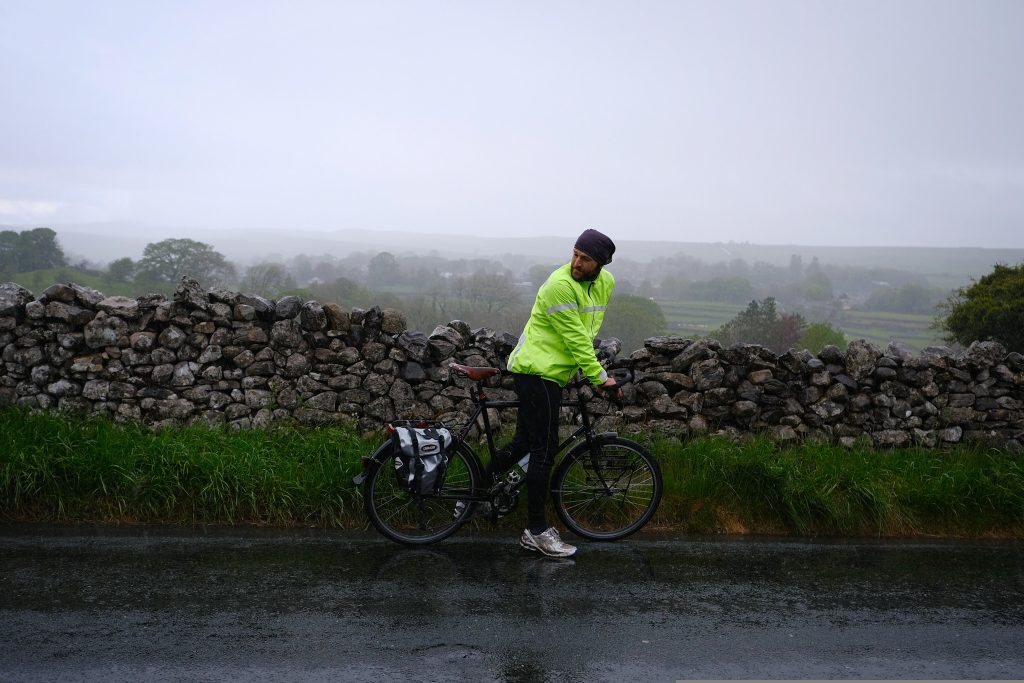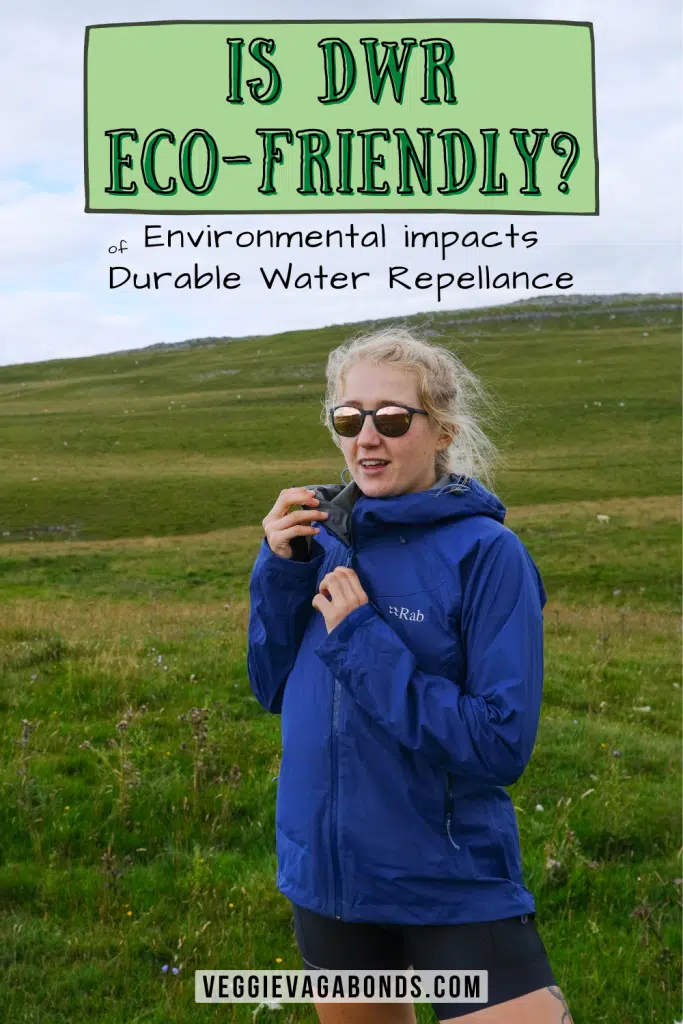A dive into durable water repellent environmental impacts and ethical alternatives for waterproofing outdoor clothing
Ever wondered how your waterproof kit managed to keep you dry outside? It’s the durable water repellent (DWR) coating working to repel water from your coat and keep you feeling comfortable.
Great stuff! But although the DWR technology is perfect for keeping you dry, it’s not so great for the planet. The complete opposite in fact.
But are there alternatives and if so why aren’t we using them?
We take a dive into DWR and share alternatives that are effective whilst also being environmentally friendly.

What make something Durable Water Repellent?
DWR is name used for chemicals or treatments applied to fabrics to help keep them dry and minimize water absorption. It is not a single material or system as the properties and chemicals differ between manufacturers and the treatments they use.
It works by creating a barrier on the outer surface of fabric, to prevent water penetrating through. The technology causes water to bead up and roll off.
It is commonly called perflourinated compound (PFC) as these are the most effective at repelling water and dirt. There are two main fluorinated compounds used in the outdoor industry perfluorooctane sulfonate (PFOS) and perfluorooctanoic acid (PFOA).
A C8 fluorocarbon-based treatment is what has commonly been used in outdoor clothing, however, this has been found to be extremely harmful to the environment and humans.
Although they are termed durable water repellents (DWR), they don’t last forever. Over time DWR’s lose their effectiveness and need reviving. The good thing is this can be done easily with sprays or wash-in treatments to revive your waterproof outdoor gear.

Want more ethical outdoor guides and gear? Sign up for our newsletter to get our latest posts
Environmental Impacts of DWR
The biggest issue with DWR treatments is that they don’t degrade, so remain in the environment and living organisms.
Traces of PFCs have been found in some of the most remote parts of the world in soil, water, plants, wildlife and humans. As they aren’t biodegradable, they persist in the environment creating a knock-on effect on the ecosystem.
This can result in bioaccumulation, which is where the chemicals from DWRs build up in the fatty tissues of animals. This accumulation of chemicals increases as you move up the food chain, a process known as biomagnification. A lot of these chemicals have been found to be toxic and cause adverse health effects on wildlife and humans.
Because they don’t degrade in the environment, DWRs contribute to the rising issues around micro plastic pollution. When washed, textiles with DWR expel small amounts of chemicals and microplastics, which are released into wastewater. This creates issues around how to dispose of textiles treated with DWR as they don’t naturally degrade and have such devastating impacts when released into the natural world.
There are also concerns around the production of DWR chemicals as this process releases greenhouse gases and other pollutants into the earth’s atmosphere.
Health Implications Associated with DWRs
As you can imagine, all these chemicals and microplastics knocking about in the environment can have huge implications for our health.
DWRs have been found to enter the body through inhalation, ingestion or coming into contact with the skin. Studies have shown that exposure to such harsh chemicals has a serious impact on our health. They’ve been associated with liver damage, cancer, thyroid disease, reduced response to vaccines, reduced fertility rates and birth defects.
Pretty terrible, especially as DWRs have only been around since the 1960s and have caused so much damage yet they continue to be used.

Alternatives to DWR
The reason DWR is so popular is because it’s so effective for outdoor gear. It repels water and dirt effectively, whilst also lasting for a while on fabrics. It can then easily be renewed.
DWRs keep water from penetrating the fabric by beading up and rolling off. If water remains sitting on the fabric’s surface it remains wet and this affects the garment’s breathability. This is commonly referred to as “wet out”.
Companies have looked to alternatives but there aren’t many that live up to the same standards of DWR. For example, wax and silicone treatments can repel water, causing it to bead up at first. However, they lose their effectiveness when coming into contact with dirt and oil. Lessening the lifetime of the garment and thus further contributing to the pollution from the textile industry.
Some companies, such as Patagonia, have found alternatives to the harmful C8 fluorocarbon-based treatment. They have instead switched to a shorter C6 strain. It’s still fluorocarbon-based, but it breaks down faster in the environment and is possibly less toxic.
Keep exploring…
Buyer’s Guide & Tips for Finding Used Outdoor Gear
Sustainable Hiking Tips
The Best Waterproof Jackets for Outdoor Pursuits
All of Our Green Adventure Tips for the Outdoors

Gore-Tex has pledged to remove PFCs from their products by the end of 2023, which is huge as they are one of the leading materials supplied to outdoor brands.
Pioneering the way at the front of the battle against PFCs is Vaude, who has been using their PFC-free eco-finish on all their waterproof and water-resistant clothing since 2018.
They’ve had a few hiccups along the way and have encountered some issues, such as not being able to find PFC-free zips from suppliers. The products do also need more care to last and are not oil-repellent which isn’t too much of an issue in the outdoors. But they’re determined to get to the point where their garments are completely PFC-free.
As well as Vadue’s Bionic eco-finish, Ceplex and Dermizax have been regarded as alternatives to DWR treatments. Ceplex is a Polyurethane (PU) coating and Dermizax is a PU membrane with moving molecules.
Nickwax founder Nick Brown is of the firm belief that there is no place for PFCS at all due to the harm they cause. So all of their products are completely PFC-free. A real win for the planet and definitely a step in the right direction.
Waterproof kit is essential for the outdoors. It really can be the difference between life and death in some circumstances.
Although there is still work to be done, making DWR kinder to the planet, companies are relaising the adverse affects they have on the planet. With some making the pledge to completely cut them from their products. As the research into more sustainable DWR continues, it’s important to support companies investing in the planet.





